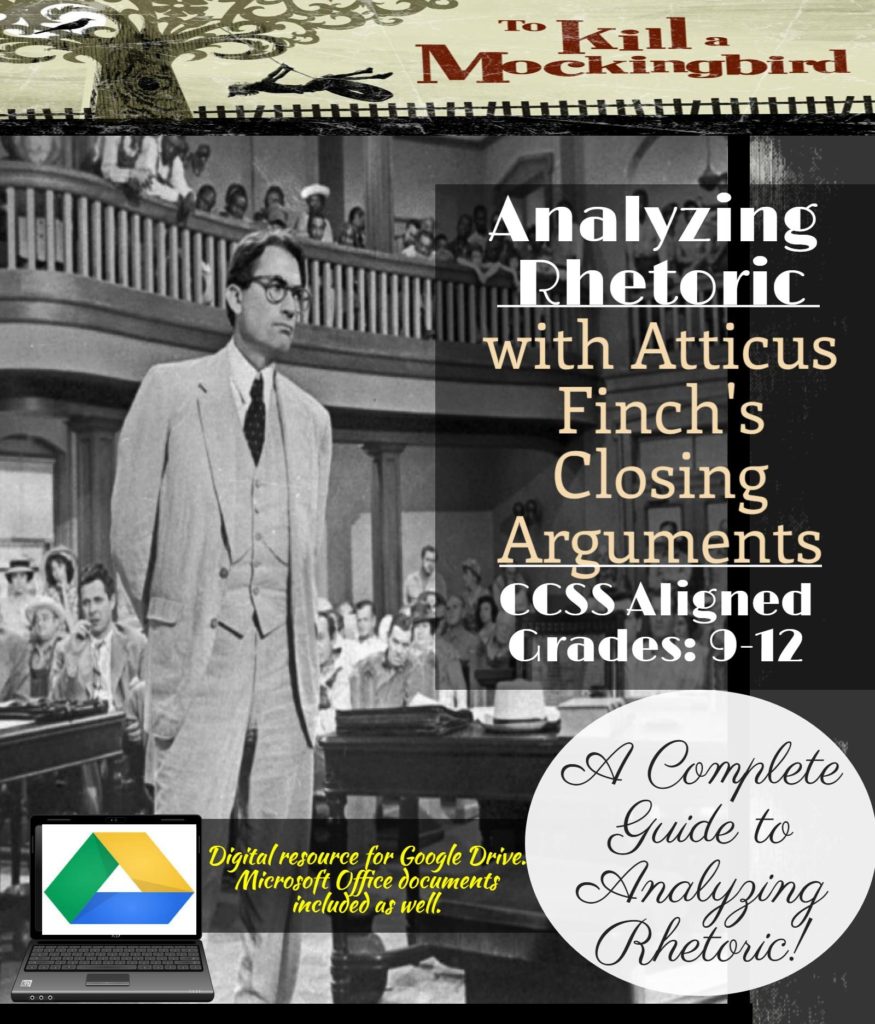Analyze an Author’s Argument with Atticus Finch’s Closing Arguments
 Teach students how to analyze an author’s arguments with Atticus Finch’s Closing Arguments!
Teach students how to analyze an author’s arguments with Atticus Finch’s Closing Arguments!
Analyzing an author’s arguments can be challenging for students; however, this step-by-step method will make this skill clear and easy while creating an in-depth analysis! Everything to teach rhetoric, logical fallacies is included. Show your students how to analyze the rhetoric/fallacies/message/language of any author’s arguments through this iconic passage from To Kill a Mockingbird.
Includes:
– PowerPoint and Google Presentation on rhetoric and logical fallacies
-PowerPoint Presentation and Google Presentation to introduce this step-by-step method
-Close reading passage of Atticus Finch’s closing arguments
– Analyzing rhetoric graphic organizer
– Reader response questions to further depth of analysis
– Separate logical fallacies PowerPoint and Google Presentation
– Separate Rhetoric PowerPoint and Google Presentation
– Note taking documents for both logical fallacies and rhetoric lessons
– Lesson plans
– Lesson plans on teaching close reading strategies with this closing argument
– Google Apps Links to Google Presentations and Organizer Google Documents
– Student sample analysis
CCSS Aligned!
No prep plans!
Great test prep!
CCSS Aligned
Follow my store by clicking on the link at the top of the page for updates, announcements, and fun freebies! You can also find me on Pinterest, and Facebook!
Also for teaching To Kill a Mockingbird:
20 Literary Analysis Questions for To Kill a Mockingbird!
Other Analyzing Rhetoric Lessons to Consider:
Analyzing Arguments with Dr. King’s Letter from a Birmingham Jail
Ethos, Pathos, Logos- The Three Pillars of Persuasion
Logical Fallacies made Easy!
Rhetoric- Ethos/Pathos/Logos Bell Ringer Activities!
Rhetorical Analysis-Analyzing an Author’s Argument
Save money with these UNIT BUNDLES!
Analyze Arguments: King’s Letter from a Birmingham Jail- COMPLETE UNIT BUNDLE!
Rhetorical Analysis Unit BundleRhetorical Analysis-Analyzing an Author’s Argument